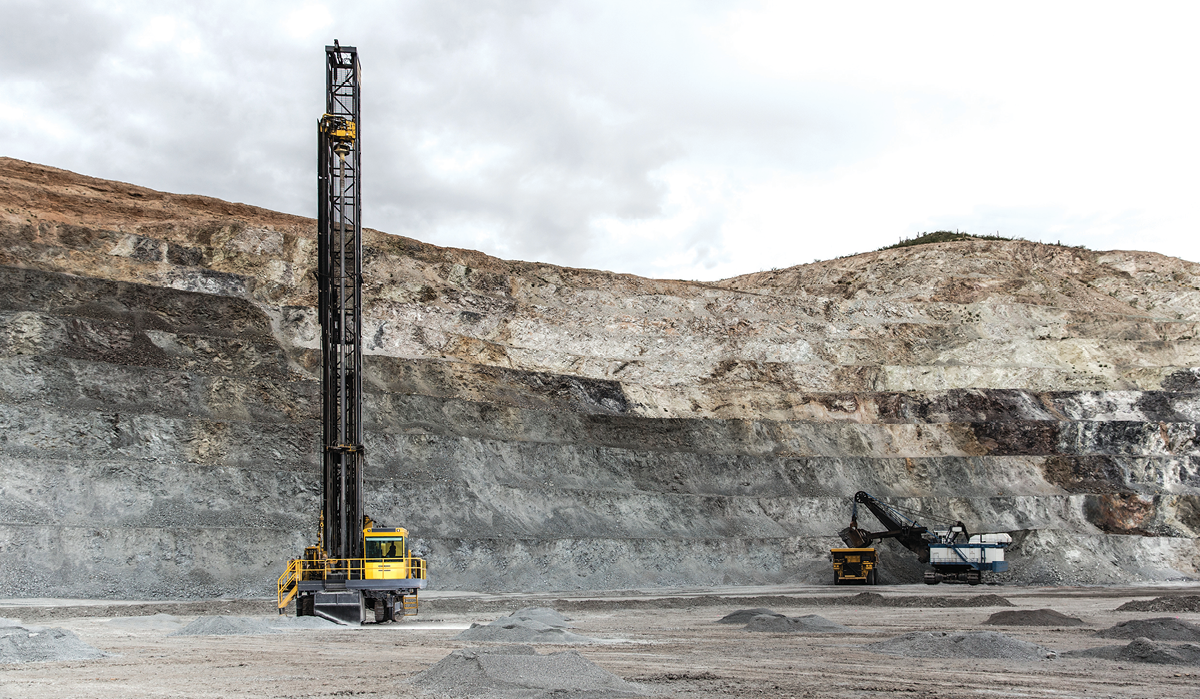Blast Hole Drilling
15Jan
Blast hole Drilling is a technique used in mining whereby a hole is drilled into the surface of the rock, packed with explosive material, and detonated. The aim of this technique is to induce cracks in the inner geology of the surrounding rock, in order to facilitate further drilling and associated mining activity.

Advantages
- Drilling and blasting is a very versatile method that can be utilized in all different types of rocks.
- Drill and blast requires a lower up-front investment than acquiring a TBM, making it a more economically friendly option.
- Drilling and blasting is an environmentally friendly option that can significantly reduce noise, dust, and visual pollution, and instead isolates any pollution near the tunnel portal.
- Compared to cut-and-cover, the quantity of construction & demolition materials (C&D) is greatly reduced.
- Compared to cut-and-cover, disturbances to local traffic are greatly reduced.
Disadvantages
- Since drill and blast involves the usage of explosives, there is the potential hazard associated with establishing a temporary storage site for said explosives, often called a magazine site. This potential hazard can be mitigated through the planning and site selection process.
- Compared to TBM, drill and blast mining results in higher vibration levels.
AggeneysBlast Hole Drilling AllanridgeBlast Hole Drilling BBlast Hole Drilling Balfour MpumalangaBlast Hole Drilling Barberton South AfricaBlast Hole Drilling BlyvooruitzichtBlast Hole Drilling BoksburgBlast Hole Drilling BrakpanBlast Hole Drilling Brits North WestBlast Hole Drilling CBlast Hole Drilling CarletonvilleBlast Hole Drilling Cullinan DBlast Hole Drilling DannhauserBlast Hole Drilling DingletonBlast Hole Drilling DominionvilleBlast Hole Drilling Driefontein GautengBlast Hole Drilling Dundee KwaZulu-NatalBlast Hole Drilling EBlast Hole Drilling ElandslaagteBlast Hole Drilling Evander FBlast Hole Drilling FochvilleBlast Hole Drilling GBlast Hole Drilling Glencoe GraskopBlast Hole Drilling Gravelotte LimpopoBlast Hole Drilling HBlast Hole Drilling HartbeesfonteinBlast Hole Drilling HattingspruitBlast Hole Drilling HlobaneBlast Hole Drilling KBlast Hole Drilling KathuBlast Hole Drilling Kimberley Northern CapeBlast Hole Drilling Kinross KleinzeeBlast Hole Drilling KrugersdorpBlast Hole Drilling LBlast Hole Drilling LephalaleBlast Hole Drilling Lime AcresBlast Hole Drilling LydenburgBlast Hole Drilling MBlast Hole Drilling Murchison MusinaBlast Hole Drilling NBlast Hole Drilling NababeepBlast Hole Drilling Newcastle NiekerkshoopBlast Hole Drilling Nigel OBlast Hole Drilling OdendaalsrusBlast Hole Drilling OgiesBlast Hole Drilling OkiepBlast Hole Drilling Orkney PBlast Hole Drilling Penge PhalaborwaBlast Hole Drilling Pilgrim's Rest RBlast Hole Drilling RandfonteinBlast Hole Drilling RaytonBlast Hole Drilling ReiviloBlast Hole Drilling RooibergBlast Hole Drilling SBlast Hole Drilling Springbok SteelpoortBlast Hole Drilling StilfonteinBlast Hole Drilling TBlast Hole Drilling ThabazimbiBlast Hole Drilling UBlast Hole Drilling UlcoBlast Hole Drilling VBlast Hole Drilling ViljoensdrifBlast Hole Drilling Virginia VryheidBlast Hole Drilling WBlast Hole Drilling Warrenton WitbankBlast Hole Drilling WolmaransstadBlast Hole Drilling gautengblastholedrilling
Comments


